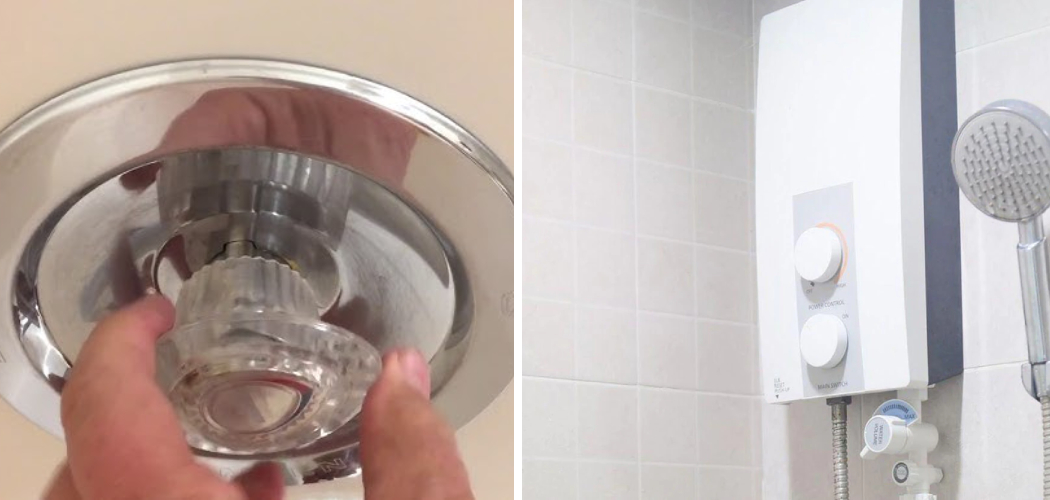Showers are a common feature found in many homes and can provide a refreshing start to the day or a relaxing end to it. With advancements in technology, showers now come in various types and styles, each offering its own unique experience. Knowing how to turn on different types of showers can help you enjoy them to their fullest potential.
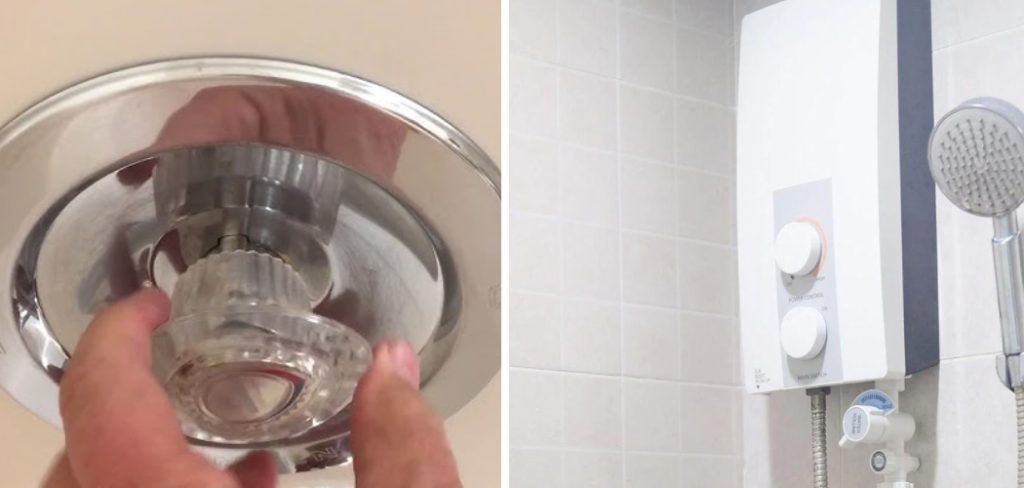
Necessary Items
Before we dive into the different types of showers, it’s important to familiarize yourself with the items required to operate them. Most showers will require the following:
- Showerhead: This is where the water comes out and is attached to a shower arm.
- Shower Handle: This controls the flow of water and allows you to adjust temperature and pressure.
- Water Source: This can be a water heater, tankless water heater, or a shower panel that provides hot and cold water.
- Drain: A drain is necessary to let out used water.
Getting Familiar With the Different Types of Showers
1) Electric Showers
Electric showers are a popular choice for many because they are energy-efficient and cost-effective. They work by heating the water as it passes through an electric element within the unit rather than relying on a separate hot water source.
To turn on an electric shower, you simply need to flip the power switch and adjust the temperature using the shower handle. It’s important to note that with electric showers, water pressure may be affected if other appliances are being used simultaneously.
2) Mixer Showers
Mixer showers combine both hot and cold water from your home’s water source to give you the desired temperature. These showers have a single control that lets you adjust both the water pressure and temperature. To turn on a mixer shower, simply turn the handle to your preferred temperature and pressure.
3) Power Showers
Power showers are similar to mixer showers in that they combine hot and cold water from your home’s water source. However, power showers come with an added pump that increases the water pressure for a more invigorating shower experience.

To turn on a power shower, you will need to flip the power switch and adjust the temperature and pressure using the single control handle.
4) Digital Showers
Digital showers are becoming increasingly popular in modern homes as they offer precise control over temperature and flow with the use of digital controls. These showers also often come with a remote control for added convenience.
To turn on a digital shower, you will need to press the power button and use the digital controls or remote to adjust the temperature and flow.
12 Steps on How to Turn on Different Types of Showers
Step 1: Gather All the Necessary Items
Make sure you have all the necessary items listed above before attempting to turn on your shower. Soaking wet and realizing you forgot a towel is never a fun experience! Then, determine the type of shower you have – electric, mixer, power, or digital.
Step 2: Locate the Shower Controls
The location of your shower controls may vary depending on the type and style of your shower. They are usually located near the showerhead or on a separate wall panel. Then, make sure the water source is turned on and check that there are no leaks.
Step 3: Turn on the Water Source
If you have an electric shower, you will need to turn on the power switch. For other types of showers, simply ensure that the main water valve is open. For mixer and power showers, you may also need to turn on the separate hot water source.
Step 4: Test the Water Temperature
Before stepping into the shower, it’s important to test the water temperature first. Adjust the handle or digital controls until you reach a comfortable temperature. While it may take some trial and error, remember to be patient and make small adjustments until you find the perfect temperature.

Step 5: Adjust the Water Pressure
If you have a mixer or digital shower, you can also adjust the water pressure to your liking. If using a power shower, this step is not necessary as the pump automatically increases the pressure. And remember, don’t get too carried away with high pressure, as it can be damaging to your skin.
Step 6: Check for Consistency
Once you have found your desired temperature and pressure, run the water for a few minutes to ensure it stays consistent. This will give you an idea of how long it takes for the water to reach the desired temperature and pressure. It’s also a good time to make any final adjustments.
Step 7: Get Ready to Enter
Now that your shower is turned on and at your desired settings, it’s time to step in! Remember to take caution, as the floor may be slippery, especially if you have a bathtub-shower combo. And always use a bath mat for added safety.
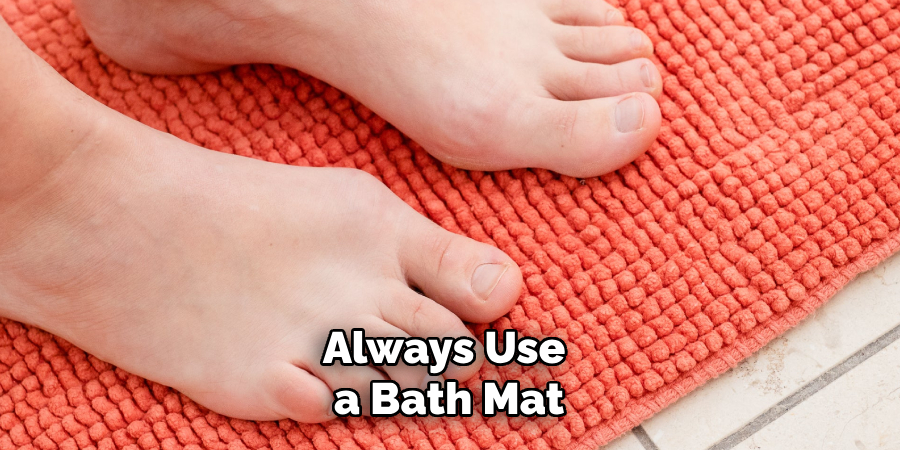
Step 8: Enjoy Your Shower
This step may seem obvious, but it’s important to remember to relax and enjoy your shower. Take deep breaths, let the warm water soothe your muscles, and take your time. Showers are not only for cleaning; they can also be a form of self-care.
Step 9: Adjust as Needed
If you find that the water temperature or pressure is not consistent, you can make small adjustments during your shower. This will help you achieve a more enjoyable experience. Then, once you step out of the shower, remember to turn off the water source and controls.
Step 10: Rinse and Repeat
If you are taking a longer shower, you may need to adjust the temperature or pressure as needed. Simply follow the previous steps to do so. Never be afraid to make adjustments until you find the perfect settings for your shower.
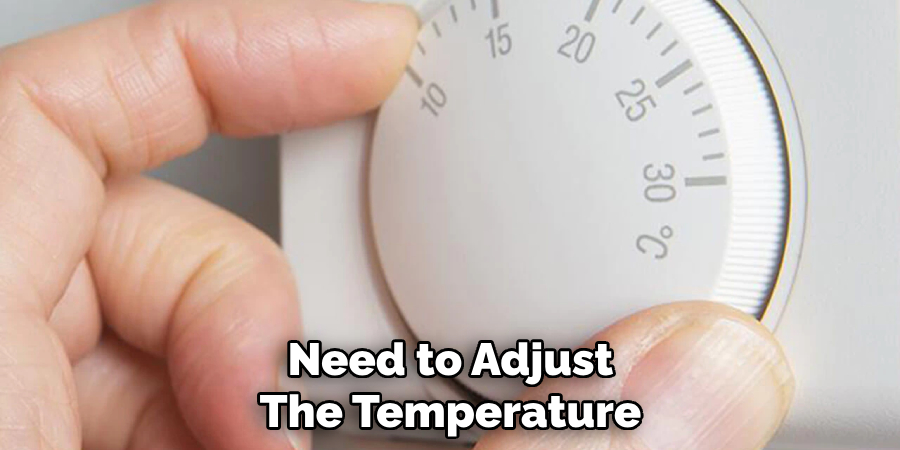
Step 11: Turn Off the Water Source
After finishing your shower, always remember to turn off the water source and controls. This will prevent any potential leaks or damage. And don’t forget to hang up your towel afterward! There’s nothing worse than a damp towel.
Step 12: Keep Your Shower Clean
To prevent any potential buildup or clogs, it’s important to regularly clean your shower. This includes wiping down the walls and floor, unclogging drains, and replacing any worn-out parts if needed. A clean shower also means a more enjoyable shower experience!
In conclusion, turning on a shower may seem like a simple task, but there are many different types of showers with varying controls and settings. It’s important to familiarize yourself with your specific shower type and always remember to test the water temperature and pressure before stepping in. With these 12 steps, you can confidently turn on and enjoy your shower every time.
9 Safety Measures to Keep in Mind When Using Showers
1) Test the Water Temperature Before Entering
As mentioned before, it’s important to always test the water temperature before stepping into a shower. This will prevent any potential burns or discomfort. As a general rule, the water temperature should not exceed 120°F (49°C).
2) Use Non-Slip Mats or Strips
Slipping in the shower is a common accident, so it’s important to take precautions like using non-slip mats or strips on the floor of your shower. This will provide more grip and reduce the risk of falls. While showering, also be mindful of any shampoo or soap residue that may make the floor slippery.
3) Place Shower Products and Tools in Reach
To avoid reaching or leaning for shower products while standing in a slippery shower, keep them within easy reach. This will prevent you from losing balance and potentially falling. So, make sure to have your shampoo, conditioner, body wash, and any other products within arm’s reach.

4) Keep the Floor Clear
Besides shower products, make sure the floor of your shower is clear of any potential tripping hazards. This includes bath mats, razors, bottles, or caddies that may have fallen onto the floor. Always check before entering the shower to ensure you have a clear path.
5) Don’t Overexert Yourself
While showers can be relaxing, it’s important not to overdo it and potentially strain yourself. Especially if you are feeling lightheaded or dizzy, take it easy in the shower, and don’t push yourself too much.
6) Set a Timer
For those who tend to lose track of time while showering, it’s important to set a timer to prevent staying in the shower for too long. Prolonged exposure to hot water can cause skin irritation and dryness, so aim for short showers between 5-10 minutes.
7) Keep Electrical Appliances Away from Water
If you have any electrical appliances in your bathroom, make sure they are kept away from water sources like the shower. This includes hair dryers, curling irons, and electric razors. Water and electricity don’t mix well, so it’s best to err on the side of caution.
8) Have a Shower Buddy
For those who may have mobility issues or require assistance in the shower, it’s always a good idea to have someone nearby. This will ensure you have help in case of any accidents or emergencies.
9) Install Grab Bars
If you or anyone in your household has difficulty standing or balancing in the shower, consider installing grab bars for added support. These can be placed on the walls or inside the shower for stability and safety.
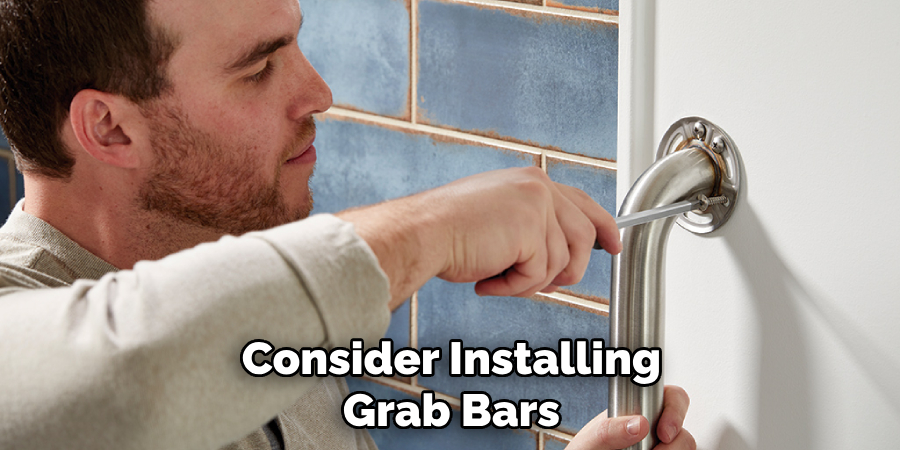
Overall, taking these safety measures on how to turn on different types of showers into consideration will help ensure a safe and enjoyable shower experience for everyone. Remember to always prioritize your well-being while using the shower, and don’t hesitate to make necessary adjustments for comfort and safety. So go ahead, turn on the water, adjust the temperature and pressure, and enjoy your next shower with peace of mind.
8 Things to Avoid in the Shower
While showers can be a great way to relax and rejuvenate, there are certain things you should avoid doing while showering. These include:
1) Using Harsh Scrubs or Loofahs
Scrubbing too vigorously with harsh scrubs or loofahs can actually damage your skin. It’s best to use gentle exfoliators and to only lightly scrub your skin. Even better, skip the scrubbing altogether and stick to using your hands or a soft washcloth.
2) Shaving Without Preparation
Shaving in the shower can be convenient, but make sure to prepare your skin properly beforehand. This means exfoliating and using warm water to soften the hair follicles. Also, use a moisturizing shave gel or cream to prevent razor burn and irritation.
3) Washing Your Face with Hot Water
Hot water can strip your face of its natural oils, leading to dryness and irritation. It’s best to wash your face with warm or cool water instead. For those with sensitive skin, it’s even better to wash your face outside of the shower altogether.
4) Using Too Much Shampoo or Conditioner
Overusing shampoo and conditioner can weigh down your hair and leave behind a buildup that can lead to dandruff. Use only a small amount and concentrate on the roots and scalp for best results. Again, less is more when it comes to hair products.
5) Shampooing Every Day
Washing your hair every day can strip it of its natural oils and lead to dryness. Instead, try washing your hair every other day or using a dry shampoo in between washes. This will help maintain the health and shine of your hair.
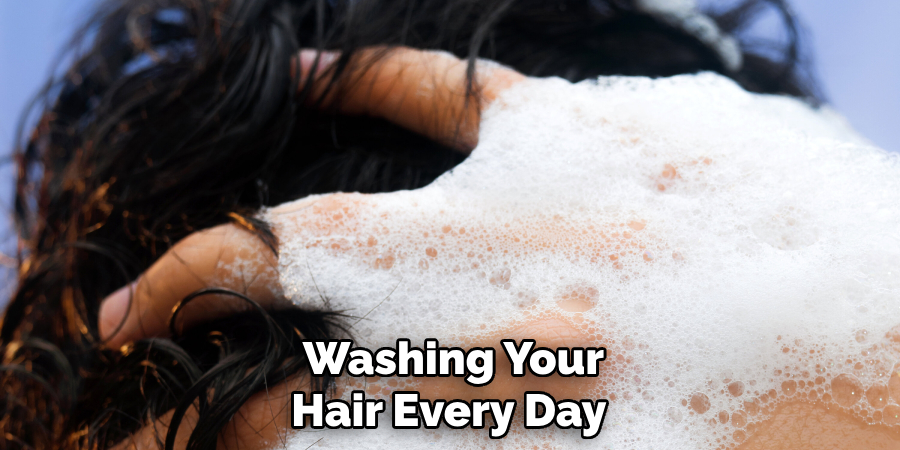
6) Letting the Water Run While Shaving or Washing Your Face
Leaving the water running while you shave or wash your face not only wastes water but also causes a drop in water pressure and temperature. This can lead to an uncomfortable shower experience. Turn off the water when not actively using it to conserve resources.
7) Forgetting to Rinse Off Soap and Shampoo
It’s important to thoroughly rinse off all soap and shampoo from your body and hair. Leaving behind residue can lead to dryness, irritation, and even acne on your body. Make sure to take the time to properly rinse off before stepping out of the shower.
8) Using Hot Water Exclusively
While a hot shower may feel great at the moment, using hot water exclusively can be damaging to your skin. It can cause dryness and irritation, especially if you have sensitive skin. Try alternating between warm and cool water for a more balanced shower experience.
Remember, the key to a safe and enjoyable shower is finding the right balance of temperature, pressure, and products for your individual needs. Be mindful of your surroundings and take care of your skin and hair by avoiding these common mistakes.
8 Additional Tips for a Relaxing Shower Experience
In addition to the safety and hygiene tips mentioned above, here are some additional ways to enhance your shower experience and make it more relaxing:
1) Use Essential Oils
Adding a few drops of essential oils, such as lavender or eucalyptus, to your shower can create a calming and refreshing aroma. Just be sure to mix the oils with a carrier oil, such as almond or coconut oil, before applying it to your skin.
2) Play Music or Listen to a Podcast
If you have access to a waterproof speaker or radio, consider playing some relaxing music or listening to a podcast while showering. This can help create an even more peaceful and enjoyable atmosphere.
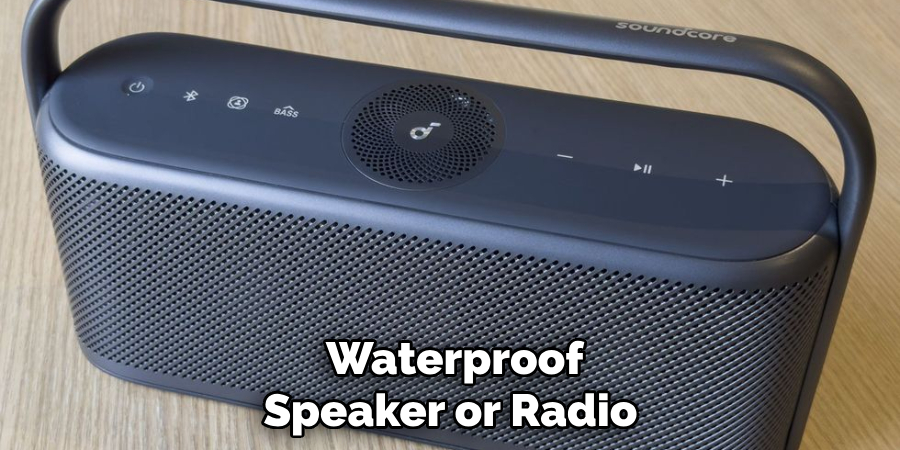
3) Try a Shower Steamers or Bath Bomb
Shower steamers and bath bombs are made with essential oils and other relaxing ingredients that dissolve in the shower, creating a spa-like experience. These can be found at many beauty stores or online.
4) Use a Dry Brush for Exfoliation
Before stepping into the shower, use a dry brush to gently exfoliate your skin. This can improve circulation and leave your skin feeling soft and smooth. Just be sure to follow up with a moisturizer after showering.
5) Use a Shower Chair or Stool
For those who have difficulty standing for long periods of time, using a shower chair or stool can make the experience more comfortable and relaxing. It also allows for easier access to hard-to-reach areas for washing.
6) Light Candles or Use Dim Lighting
Create a calming ambiance by lighting some candles or using dim lighting in the bathroom. This can help you relax and unwind while taking a shower. As always, be sure to use caution when using open flames in the bathroom.
7) Take Deep Breaths
While showering, take a few moments to focus on your breathing. Inhale deeply and exhale slowly to help calm your mind and relax your body. This can also promote better circulation and oxygen flow throughout your body.
8) Practice Mindfulness
Use your shower as a time to practice mindfulness and focus on the present moment. Pay attention to the sensation of the water on your skin, the sound of the running water, and any other sensations you may feel. This can help reduce stress and promote overall well-being.
While avoiding certain behaviors in the shower is important for safety and hygiene, incorporating relaxation techniques on how to turn on different types of showers and self-care practices can elevate the experience and make it more enjoyable.
Take the time to create a peaceful and rejuvenating shower routine that works for you. Remember, self-care is important in all aspects of our daily lives, including something as simple as taking a shower.
Frequently Asked Questions
Can I Shave Without Water?
It is not recommended to shave without water as it can cause irritation and discomfort. Make sure to properly prepare your skin and use warm water before shaving.
How Often Should I Change My Loofah or Washcloth?
It is recommended to change your loofah or washcloth every 3-4 weeks to avoid bacteria buildup and maintain hygiene. However, if you notice any signs of mold or mildew, it’s important to replace them immediately.
Is It Safe To Use Essential Oils in the Shower?
As long as essential oils are properly diluted and used in moderation, they are safe to use in the shower. Be cautious when applying undiluted oils directly onto your skin or using too much, as this can cause irritation. If you have any allergies or sensitivities, consult with a healthcare professional before using essential oils in the shower.
Conclusion
Taking a shower is an important part of our daily routine, but it’s also a time for self-care and relaxation. By avoiding common mistakes and incorporating some additional tips on how to turn on different types of showers, you can ensure a safe and enjoyable shower experience every day.
Remember to be mindful of your surroundings, take care of your skin and hair, and enjoy the simple act of taking a shower as part of your self-care routine. So go ahead, take a long and indulgent shower with these tips in mind, and don’t forget to pamper yourself a little.

